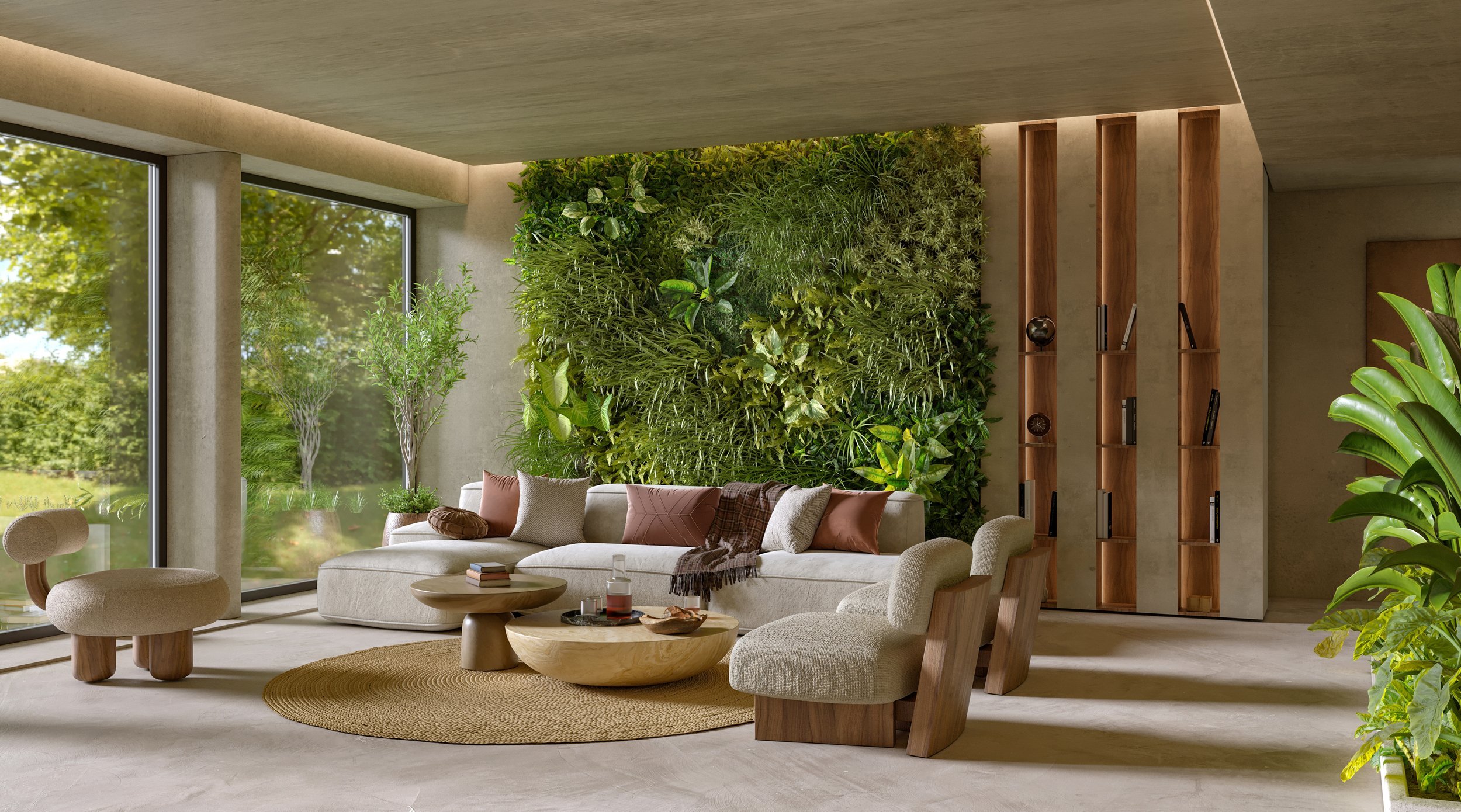The Power of Biophilic Design and How to Incorporate it Into Your Home
Whether you're working from your dining room table, a home office, or a corporate workspace that doubles as your second home, one thing is clear: your environment matters.
In our world today, where our lifestyles are very active, the spaces where we spend our workday have a profound impact on how we feel. That’s where biophilic design comes in—an approach that reconnects us with nature and boosts our well-being.
What is Biophilic Design?
Biophilic design is about integrating natural elements—light, air, greenery, textures, and even shapes—into our living and working environments. It’s not just adding a houseplant to your desk (though that’s a great start). It’s a holistic approach to creating spaces that support your physical and mental health by adding the balance of the natural world.
Why Biophilic Design Makes a Difference
Researchers have found that environments rich in natural elements can lower stress, improve focus, and even boost creativity. Incorporating biophilic design in our interiors brings the restorative qualities of nature indoors, supports well-being, and creates tranquil, inspiring spaces. From incorporating indoor plants to natural materials, water features, and lighting, all contribute to biophilic design.
The Science Behind Biophilic Design
Biophilic design can have a significant impact on our circadian rhythm. Circadian rhythm is your body’s internal clock that regulates physical, mental, and behavioral changes over a 24-hour cycle.
To support our circadian rhythm, biophilic design often includes lighting systems that adjust color temperature and intensity throughout the day to mimic the sun’s movement, further supporting the body’s natural rhythms.
How to Incorporate Biophilic Design in Your Home
Not all projects have the opportunity to incorporate some of the larger features of biophilic design like living walls or water features, but we like to incorporate this type of design in subtle ways.
For instance, creating a space for indoor plants to grow in natural light or providing homeowners with a place to grow herbs for cooking. Or where we specified natural cork flooring for a kitchen where our clients love to cook. The tactile feature of this type of flooring along with the natural components of cork give a unique look.
For more inspiration, read Designing a Home That’s Good for You AND the Planet.
In summary, incorporating biophilic design in homes is not just about aesthetics–it’s a holistic approach that promotes health, happiness, and sustainability, making our living environments more supportive of both our bodies and minds.
If you find yourself yearning for a connection with nature but have no clue where to start, reach out to us today. We'd love to help inspire you!
Until next time,
Trisha





